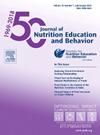以社区为基础的干预项目对尼泊尔西部农村5岁以下营养不良儿童营养状况的影响
IF 2.3
3区 医学
Q2 EDUCATION, SCIENTIFIC DISCIPLINES
引用次数: 0
摘要
目的:了解尼泊尔社区营养干预对营养不良儿童的影响。设计:准实验时间序列。背景:特莱地区农村的三个村庄,大多数是边缘民族人口。参与者:75名6至59个月大的营养不良儿童。干预措施:2016年9月至2017年3月,以社区为基础的一揽子计划,包括超级面粉、牛奶、生长监测、营养教育和咨询。主要结局:营养状况改变。分析:我们使用配对t检验和重复测量分析来比较测试前和测试后测量的差异,分析各种确定的z分数变化。我们采用随机效应面板数据回归来评估干预和暴露时间的影响。结果:干预6个月前,除身高(发育迟缓)外,年龄体重(体重不足)和身高体重(消瘦)的平均z分数继续升高。平均而言,在调整社会人口学和健康相关变量后,营养干预每个月导致年龄体重z分数提高0.49个单位(系数,0.49[95%系数区间(CI), 0.47-0.50]),身高体重z分数提高0.41个单位(系数,0.41 [95% CI, 0.38-0.44]),年龄身高z分数提高0.31个单位(系数,0.31 [95% CI, 0.29-0.33])。结论和影响:利用当地资源的社区营养干预措施有效减少了营养不良。在资源匮乏的环境中也可以促进类似的干预措施。本文章由计算机程序翻译,如有差异,请以英文原文为准。
Impact of a Community-based Intervention Program on Nutritional Status of Children Aged Under 5 Years With Undernutrition in Western Rural Nepal
Objective
To identify the impact of community-based nutritional intervention among children with undernutrition in Nepal.
Design
Quasi-experimental time series.
Setting
Three villages in the rural Terai region with a majority marginalized ethnic population.
Participants
Seventy-five children with undernutrition between 6 and 59 months.
Interventions
Community-based package included super flour, milk, growth monitoring, nutrition education, and counseling conducted from September, 2016 to March, 2017.
Main Outcome
Change in nutritional status.
Analysis
We compared differences in pretest and posttest measurements using paired t test and repeated-measures analysis of various identified changes in z-scores. We applied random-effects panel data regression to evaluate the effect of intervention and exposure time.
Results
The mean z-scores of weight-for-age (underweight) and weight-for-height (wasting) continued to increase until 6 months of intervention, except for the height-for-age (stunting). On average, every month of the nutritional intervention led to an improvement in weight-for-age z-scores by 0.49 units (coefficient, 0.49 [95% coefficient intervals (CI), 0.47–0.50]), weight-for-height z-scores by 0.41 units (coefficient, 0.41 [95% CI, 0.38–0.44]) and height-for-age z-scores by 0.31 units (coefficient, 0.31 [95% CI, 0.29–0.33]) after adjusting the sociodemographic and health-related variables.
Conclusions and Implications
Community-based nutrition interventions that use local resources effectively reduce undernutrition. Similar interventions can be promoted in low-resource settings.
求助全文
通过发布文献求助,成功后即可免费获取论文全文。
去求助
来源期刊
CiteScore
4.20
自引率
11.50%
发文量
379
审稿时长
44 days
期刊介绍:
The Journal of Nutrition Education and Behavior (JNEB), the official journal of the Society for Nutrition Education and Behavior, is a refereed, scientific periodical that serves as a global resource for all professionals with an interest in nutrition education; nutrition and physical activity behavior theories and intervention outcomes; complementary and alternative medicine related to nutrition behaviors; food environment; food, nutrition, and physical activity communication strategies including technology; nutrition-related economics; food safety education; and scholarship of learning related to these areas.
The purpose of JNEB is to document and disseminate original research and emerging issues and practices relevant to these areas worldwide. The Journal of Nutrition Education and Behavior welcomes evidence-based manuscripts that provide new insights and useful findings related to nutrition education research, practice and policy. The content areas of JNEB reflect the diverse interests in nutrition and physical activity related to public health, nutritional sciences, education, behavioral economics, family and consumer sciences, and eHealth, including the interests of community-based nutrition-practitioners. As the Society''s official journal, JNEB also includes policy statements, issue perspectives, position papers, and member communications.

 求助内容:
求助内容: 应助结果提醒方式:
应助结果提醒方式:


